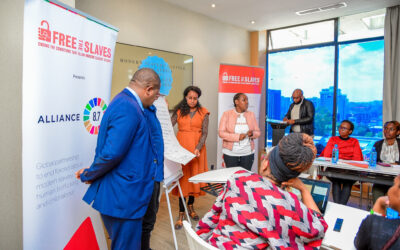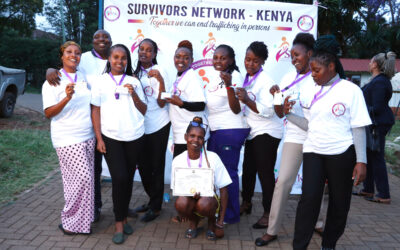January is Slavery and Trafficking Prevention Month in the U.S. It’s an important opportunity to learn why slavery still exists, what can be done to end it, and how you can help.
Thanks to the Lowenstein Sandler law firm, there’s a one-hour video that will help you understand the basics. Join Harvard Professor Timothy Patrick McCarthy, chair of the FTS board, Bukeni Waruzi, FTS executive director, and attorney Amy Wiwi of Lowenstein Sandler, also a FTS board member, to learn about the scope of modern slavery and what you can do to end it.
- Slavery never ended. It was outlawed more than a century ago, but not ended. Slavery has taken new forms and exists nearly everywhere on earth today.
- When you picture slavery, you probably think of slave ships and auction blocks and the historical slave trade from Africa. The picture today is different. It’s children on fishing boats and in mines and cocoa plantations. It’s women in sewing sweatshops and men in brick factories and stone quarries and cattle ranches. It migrant laborers in farm fields. Slavey today is people forced to work, with no pay except enough to stay alive, and they are kept in place by violence or threats.
- We are all connected to modern slavery through the things we buy. Think of your closet, or your kitchen, or your computer or cell phone or jewelery. Now picture the hardship and abuse that went into making them. Sometimes it is slavery at sweatshop factories, or the mines and plantations where raw commodities come from.
- With 40 million people trapped in modern forms of slavery around the world today, we can’t solve the problem by liberating people one by one. We need to end the conditions that cause modern slavery to exist. Systemic, transformative change. People are vulnerable for a reason, and we need to end that vulnerability. That is the key strategy of Free the Slaves, to change the conditions that allow modern slavery to exist, right on the frontlines in slavery hot spots.
- When people need to migrate for work, they can be tricked by human traffickers posing as legitimate labor recruiters. When people don’t have any savings and need to borrow money in emergencies, they often fall into debt slavery. When local police don’t know or enforce laws against slavery, people are easy targets for traffickers. These are the conditions at a community level that Free the Slaves works to change. Safe migration, economic stability, stronger rule of law. Respect for women and children. Community action to confront racial, ethnic and tribal discrimination that cause vulnerability.
- Free the Slaves doesn’t only focus on individual victims, we work with entire communities that are victimized. That way, we build community resistance and resilience so that everyone is safe from slavery. When an enslaved person is liberated, they won’t become re-enslaved later on, and nobody takes their place in slavery.
- Governments need to be held accountable for their promises to end slavery. Businesses need to be held responsible for slavery in their product supply chains. And vulnerable people need to learn their rights and be mobilized to exercise them.
- Everyone can help. First, spread the word that slavery still exists with co-workers, fellow students, or in you congregation or community. Second, contribute to organizations that are building bridges between communities that need help and those that have resources to assist. And third, do what you can to buy local, buy fair trade, use your consumer dollars as a force for good.




